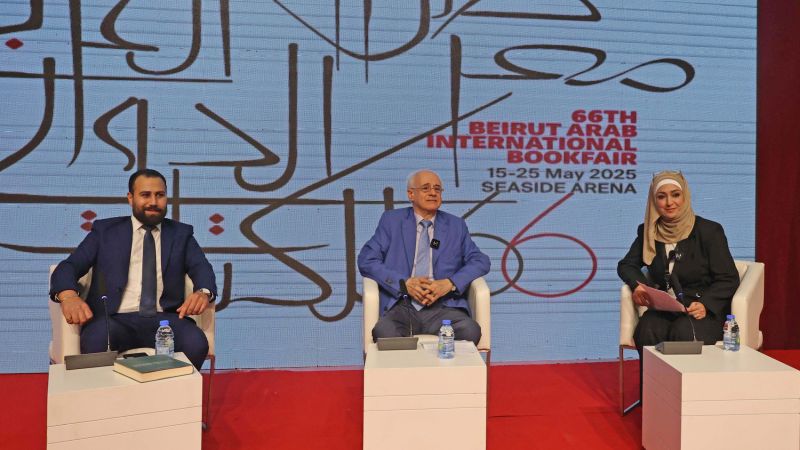As part of its participation in the 66th Beirut Arab International Book Fair, the American University of Beirut Press (AUB Press) hosted a thought-provoking discussion titled “The Arabic Language: Its History, Present, and Future.” The event featured renowned Arabic linguist Professor Ramzi Baalbaki in dialogue with scholars Malek Chaker and Amina Sleiman, and was supported by the Sheikh Zayed Bin Sultan Al Nahyan Chair in collaboration with AUB’s Center for Arts and Humanities.
Held before a diverse audience of political figures, scholars, and linguists from across the Arab world, the conversation explored the evolution of the Arabic language, from its poetic origins to its modern usage and future prospects.
Professor Baalbaki opened the session by tracing the roots of Arabic prior to the revelation of the Qur’an, noting its prevalence in early poetry and proverbs. He emphasized that by the time of the Qur’an, Arabic had already developed into a rich and codified language, with much of its classical corpus completed by the second Hijri century.
He further explored how early linguists analyzed this corpus to identify the language’s morphological patterns (awzān) and syntactic structures. In doing so, they uncovered the unique characteristics that set Arabic apart not only from other Semitic languages but also from Indo-European tongues. Baalbaki referenced his latest book, Mukawimat al-Nazariyah al-Lughawwiya al-Arabiyya, which draws comparisons between Arabic linguistic theory and scientific frameworks such as the theory of dimensions in physics, arguing that Arabic grammar provides a comprehensive and coherent explanation for linguistic phenomena, including what is considered gharīb—the obscure or unusual.
The panel also addressed Arabic dialects and their relationship to Classical Arabic. Baalbaki dismissed the notion of conflict between colloquial and formal Arabic, affirming their mutual influence and the fluid exchange of vocabulary and structure.
Turning to contemporary concerns, Baalbaki expressed alarm over the declining use of Arabic in favor of foreign languages, particularly in academic and professional contexts. He urged educational institutions to reinforce Arabic instruction and create more engaging content in the language to preserve its relevance among younger generations.
The discussion concluded with reflections on Arabic’s linguistic precision, its expressive power, and the need for renewed cultural pride and institutional support to ensure its continued vitality in the digital age.
Audience members described the session as both insightful and inspiring, shedding light on the depth and genius of the Arabic language while fostering a deeper appreciation for its enduring legacy.

